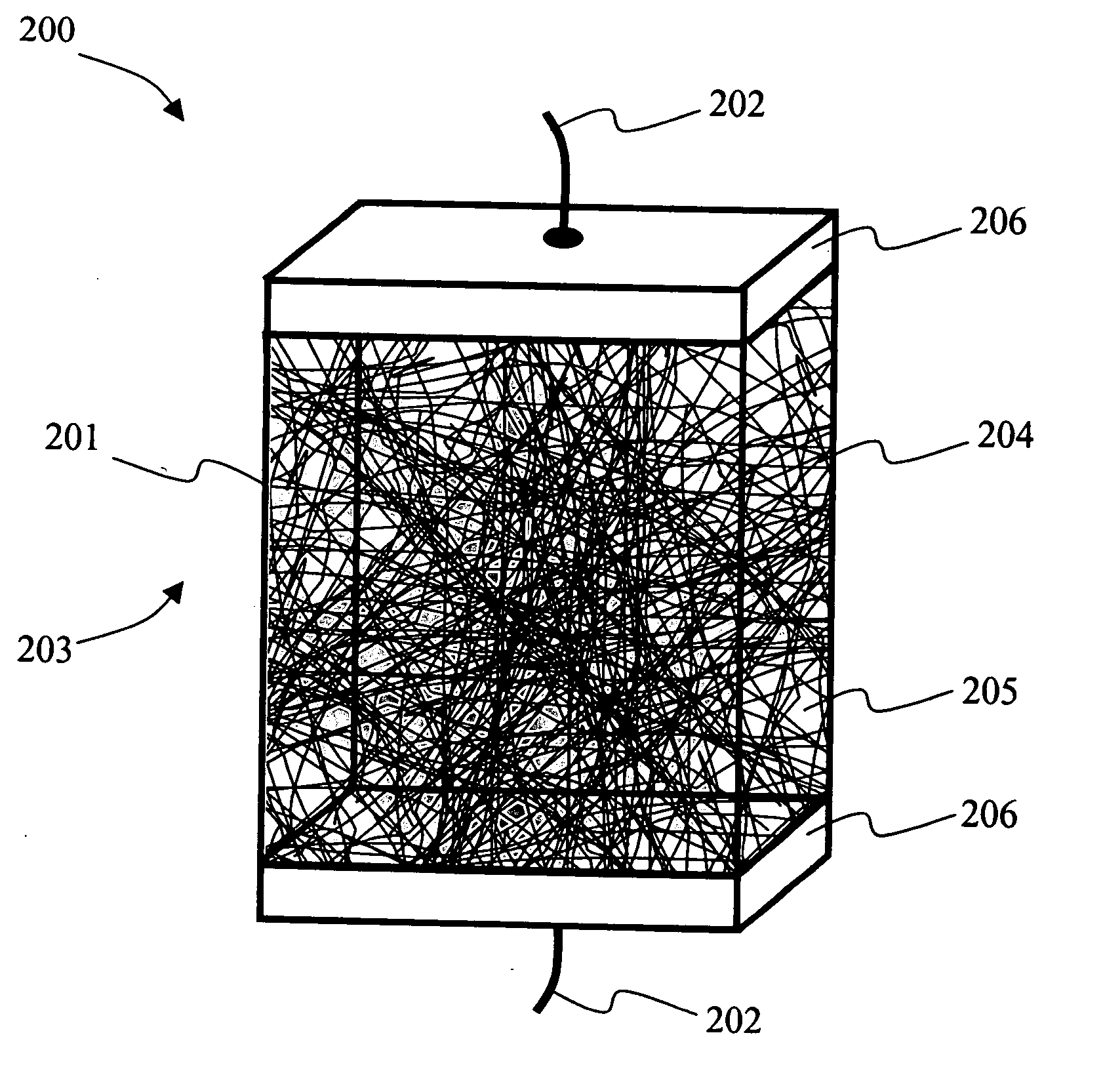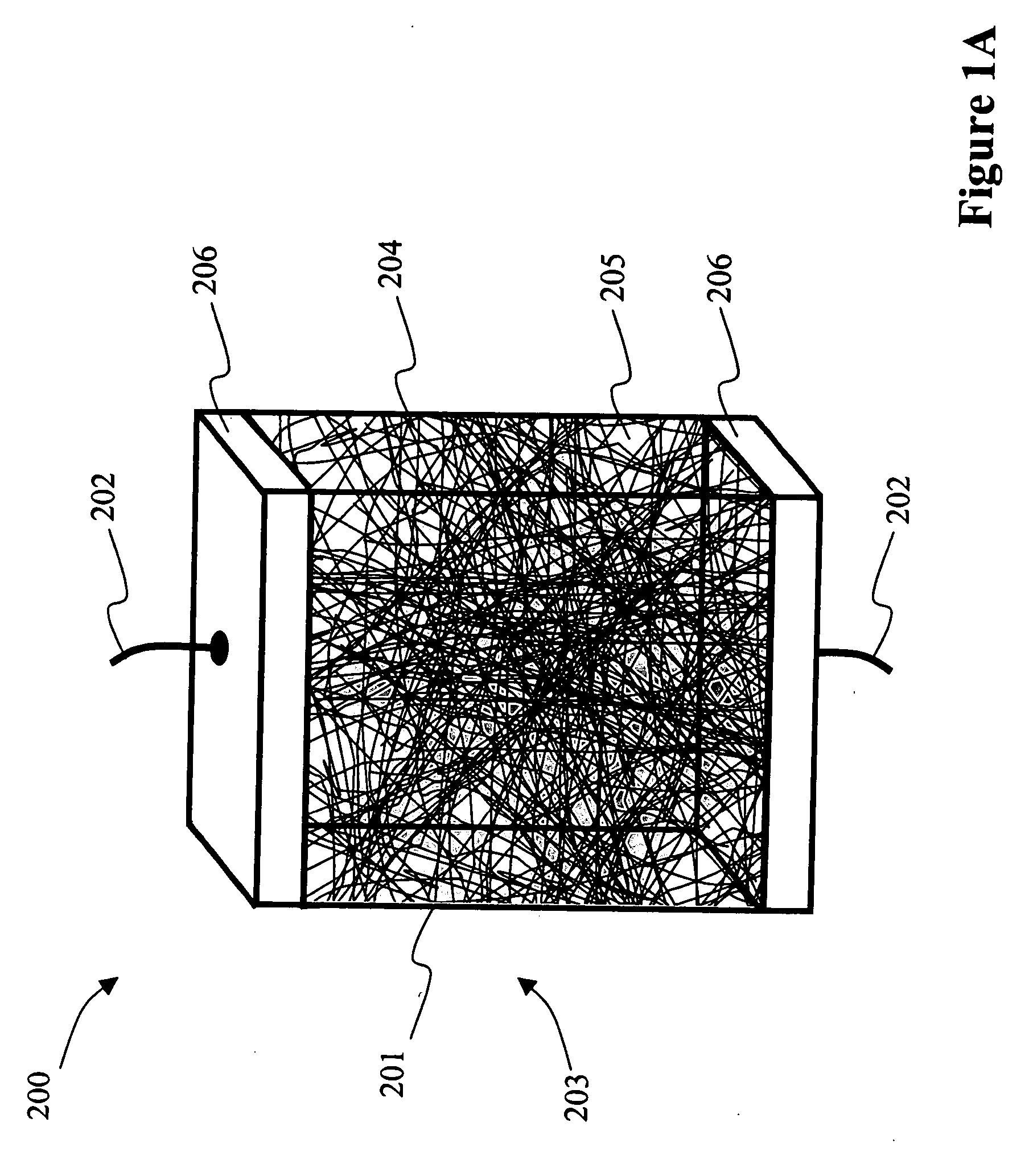Electrical component with fractional order impedance
a fractional order, electric component technology, applied in the field of electric circuits, can solve the problems of inability to precisely integer values of actual electrical components, inability to achieve exactly integer values, and inability to achieve digital approximations in bandwidth
- Summary
- Abstract
- Description
- Claims
- Application Information
AI Technical Summary
Benefits of technology
Problems solved by technology
Method used
Image
Examples
example 1
Electrochemical Preparation of [C10H10N]x[Pt(Ox)2] where C10H10N is N-methyl isoquinoline
[0094] C10H10N]2[Pt(Ox)2].H2O was prepared via reaction of Ag2[Pt(Ox)2].2H2O with [C10H10N] in H2O. The insoluble AgI was coagulated via gentle warming and filtered off under vacuum. Removal of the solvent gave the yellow product in good yield and the composition was confirmed via microanalysis. A saturated solution of [C10H10N]2[Pt(Ox)2] (4 mL) was filtered through a 1 μm filter and placed in an electrolytic chamber fitted with gold wire electrodes. A 1.25V voltage was applied and after a 24 hour period, long, dark fibers were observed to have formed. The fibers, which did not undergo decomposition, were dried in air for several days to provide a nanowire. SEM analysis revealed a network of fibers of up to about 1 cm in length and approximately 20 μm or less in diameter, giving an aspect ratio of about 5,000:1 or greater.
example 2
Chemical Preparation of [C10H10N]x[Pt(Ox)2], where C10H10N is N-methyl isoquinoline
[0095] [C10H10N]2[Pt(Ox)2] was prepared using any of the reported and well established synthetic procedures. [C10H10N]2[Pt(Ox)2] (102.2 mg, 0.155 mmol) was dissolved in 1M CF3SO3H (10 mL) with stirring under argon. A solution of 0.1M (NH4)2Ce(NO3)6 (0.3 mL, 0.03 mmol) was added dropwise and a gray, fibrous material was observed to form. This nanowire product was thoroughly washed with ice-cold water and stored at 5° C. SEM analysis was similar to that reported in the previous example.
example 3
Preparation of PVA Films Containing Potassium and Cobalt Salts of Partially Oxidized Platinum Complexes
[0096] PVA (200 mg) was dissolved in water (10 mL) by heating at 75° C. until a clear solution was obtained. The partially oxidized platinum complexes K1.6[Pt(Ox)2].2H2O and Co0.8[Pt(Ox)2].6H2O were separately dissolve quantities sufficient for the desired composite concentration and were added at room temperature to the PVA solution. This mixture was then poured into a Petri dish and stirred occasionally to ensure homogeneous dispersion of the complexes in the medium. After approximately 3 days, thin composite films were obtained.
PUM
 Login to View More
Login to View More Abstract
Description
Claims
Application Information
 Login to View More
Login to View More - R&D
- Intellectual Property
- Life Sciences
- Materials
- Tech Scout
- Unparalleled Data Quality
- Higher Quality Content
- 60% Fewer Hallucinations
Browse by: Latest US Patents, China's latest patents, Technical Efficacy Thesaurus, Application Domain, Technology Topic, Popular Technical Reports.
© 2025 PatSnap. All rights reserved.Legal|Privacy policy|Modern Slavery Act Transparency Statement|Sitemap|About US| Contact US: help@patsnap.com



